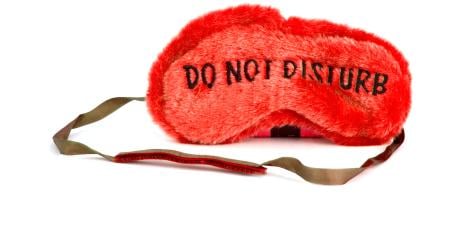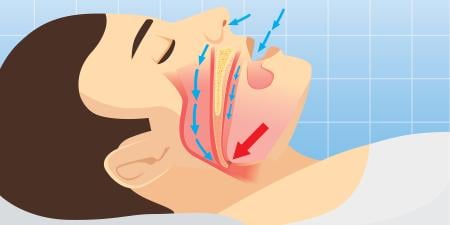Automobile crashes are the third leading cause of death and injury in the United States, with nearly 43,000 people killed in approximately 6 million accidents in 2006, according to National Highway Traffic Safety Administration statistics [1]. Over the years the ratio of the number of crashes and severity of injury to miles driven is consistently highest in younger drivers (15 to 25 years) and in those over the age of 65 [2, 3]. The most frequent contributors to these statistics are speeding and alcohol, but inattentiveness, fatigue, and sleepiness are now recognized as significant primary and secondary factors [3].
While one can be inattentive or fatigued without being sleepy, sleepiness increases the risk of crashing substantially and, subsequently, increases the likelihood of excessive injury and mortality significantly [4, 5]. Sleepiness to the degree that impairs driving may be a consequence of shorter sleep periods and longer hours of service, as in post-graduate medical training. Sleepiness is also associated with a variety of medical disorders. An individual's sleepiness is now considered a predictable—and therefore preventable—public health risk; a visit to a licensed health care practitioner can uncover the risk so that it can be properly managed. As a result, society is beginning to hold individuals accountable when their sleepiness at the wheel causes an accident and injury [6].
Sleepiness
Sleep is generally defined as a normal, rapidly reversible, brain-based, inattentive state. The opposite state is wakefulness, and transitions between the two occur normally, often in concert with circadian rhythm. Sleep is homeostatically regulated—lack of sleep increases the tendency for sleep to occur, and a surfeit of sleep promotes wakefulness. In the general population, lack of sufficient sleep to maintain alertness during the day is most often due to a lifestyle choice to sleep fewer hours than needed to sustain maximum alertness. Habits that contribute to poor sleep include the use of alcohol, nicotine, and drugs. Long hours of work—especially shift work—can also lead to poor or inadequate time for sleep.
Lack of sleep has an objective impact on functioning. A healthy person who stays awake for 18 hours has a deficit in reaction time equivalent to that of a person with an alcohol level that, in most states, would define that person as impaired [7]. The most common medical cause of daytime sleepiness is obstructive sleep apnea, which is also linked to incidence of automobile crashes [3]. D isorders such as narcolepsy and pharmacological therapies such as antihistamines and sedating drugs for treatment of anxiety can produce sleepiness or compound the effects of insufficient sleep to a degree that can interfere with the operation of a motor vehicle.
This discussion will focus on the interface between medical practice and society in regard to the detection, treatment, and management of drivers with sleepiness.
The Driver
Experiencing excessive sleepiness is common, but I do not think the personal and societal impact of driving in this condition has reached the level of societal awareness that the consequences of alcohol use or epilepsy have achieved. Dangerous levels of sleepiness may not be recognized by the driver, his or her family, or even the physician. Nevertheless, each driver is obligated to act responsibly as a citizen and as a patient [8]; that is, to comply with existing laws and regulations, including contractual relationships with an employer and insurance providers, and to disclose medical illness that may affect driving ability. A driver-patient who has or is asked about problem sleepiness or symptoms of a sleep disorder is expected to disclose relevant information honestly [9]. A driver who withholds such information increases the possibility of incurring penalties and causing injuries to others, in addition to increasing his or her own personal risk.
Once a risk of excessive sleepiness is disclosed to a physician—either by verbal report or by the driver's having had a crash or near miss after falling asleep at the wheel—that driver has an obligation to respond and adhere to medical recommendations. While the risk of crashes is high in undiagnosed sleep disorders, it falls back into normal range after the disorder is diagnosed and managed clinically, most likely due to alterations in driving habits and behaviors that come with information about the diagnosis.
The Physician
Although physicians must attempt to identify risks from excessive sleepiness and reduce the possibility that the patients will harm themselves in any way [10], they cannot be held responsible for information that is not readily apparent on a clinical examination or that is not disclosed by the patient. Neither is the physician trained in driving safety or empowered to license drivers, but it is assumed that a prudent, trained physician can identify the risks of a medical condition or medication that are liable to produce sleepiness. A physician who prescribes hypoglycemic medications, sedatives, or other medications that can affect driving performance has an obligation to warn drivers of the effects those drugs may have.
If a patient's disorder poses a danger to other people, the physician has a duty to act to reduce the risk of harm to others by reporting the patient to a licensing bureau and recommending that his or her driving privileges be revoked. This duty may be applicable not only in the case of those who are taking prescribed sedative medication but also of those with seizure disorders. Physicians are expected to reach their judgments on the basis of: (a) records and information obtained in the course of a normal medical evaluation, and (b) their expertise and experience in assessing intermediate, foreseeable markers of crash risk.
Physicians can be held liable for injuries to third parties when it can be shown that they failed to acknowledge impairments in driving performance and that this failure was a cause of the injury [11, 12]. Claims have been paid to injured parties because of a physician's failure to warn of the side effects of a sedative medication [10]. These background duties under tort law may be supplemented by statutory obligations in each state to report the names of patients who have disorders or are taking medications that pose a risk to driving safety.
What are a physician's responsibilities vis a vis patients who report symptoms of sleepiness or disorders where sleepiness may pose the risk of an automobile crash? The answer is complicated. First, there is debate over the standard of care. Even among those with advanced subspecialty training in sleep medicine who are certified to conduct examinations of commercial drivers or airline pilots, there is ongoing debate about how best to recognize sleepiness (it is a subjective complaint) and how to test and warn patients of sleepiness risk. Among those without such expertise, the situation is worse; formal training in the recognition and management of sleep disorders and sleepiness is spotty. Given the absence of reliable tests and the lack of sleep education during medical training, the current thinking is that general practitioners and those in surgical and medical specialties other than sleep medicine are not able to assess sleepiness reliably or to respond to statutory directives in an informed manner.
Second, there is the challenge of monitoring patient compliance with physician recommendations [10]. Because a person's sleepiness cannot be measured by a physiologic or biochemical test, the physician must rely on patient self-reports. Subjective reporting of reduced sleepiness with treatment are subject to bias, in part because the patient can be assumed to desire driving privileges. The ability to monitor patients objectively varies by treatment and has not been shown to reduce risk predictably. At the present time, monitoring patients' adherence to continuous positive airway pressure (CPAP) treatment is recommended for those with obstructive sleep apnea who are commercial drivers or aircraft pilots [13, 14]. There are no guidelines for assessing the effects of other treatments for sleep apnea or treatments for other sleep disorders.
Third, most states have no laws about driving while sleepy, and where laws do exist they are inconsistent. Physicians should be aware of two relevant principles about state laws [8, 10, 11]. First, if a physician is obligated to file a report under a statute or regulation, failure to do so can establish a basis for tort liability to the patient or to a third party who is injured if the patient has a crash. Second, even if the statutory reporting obligation does not specifically cover sleep apnea or another sleep disorder, the physician may still be liable in a tort suit [10]. That is, absence of an obligation to report sleep disorders does not mitigate or preempt tort liability. State statutes regulating noncommercial licensing vary widely in detail and scope and change over time, so physicians must be familiar with their state's current laws.
The physician is also a member of the society at large and must consider this role when weighing the limits of patient confidentiality against the safety of the community [15]. A physician may believe that there is a common-sense, citizen's duty to mitigate public risk that requires reporting and overrides the professional duty of confidentiality if a patient does not or cannot accept therapy or advice that diminishes dangerous sleepiness [8, 15].
Just how risk-averse a physician should be when determining a patient's driving impairment is a complicated subject. Assume, for example, that a doctor is extremely risk-averse and chooses to report any patient who admits symptoms of a condition like sleep apnea, regardless of the severity of the condition, driving history, or willingness to comply with behavioral management. Does this doctor expose himself or herself to liability for breaching confidentiality when the medical condition does not affect the patient's function? On the other hand, if the doctor adopts a high threshold—reporting only patients who have had mishaps on the road due to falling asleep—is he or she acting in accordance with professional obligations under the reporting statute or tort law?
Licensing Agencies
Standards for commercial driver licensing or aircraft piloting are set by federal regulatory agencies. In the case of drivers, while the crash rate is low relative to the number of miles driven, the stakes—e.g., financial loss, fatality—are greater, and scrutiny is stricter. For instance, there are specific targets for blood pressure and glucose control for those with hypertension and diabetes, respectively, and a diagnosis of narcolepsy prohibits a person from receiving a commercial license. Drivers with sleep disorders are now asked to disclose symptoms of snoring, sleepiness, and diagnoses of sleep apnea. Those self-identified as having sleep apnea must then complete additional assessments and undergo mandatory testing by a sleep specialist, with the cost for this testing usually borne by the driver. This testing may not be covered by medical insurance, inasmuch as it may not be clinically indicated. Medical malpractice claims cannot be brought against physicians who provide a consultation on the basis of an administrative referral for sleep disorders.
In the case of noncommercial licensure, the state Department of Motor Vehicles (DMV) establishes procedures and tests for permits and licenses that are often performance based. Those seeking a new or renewed license are asked about their general health and ability to operate a motor vehicle, with the assumption that the questions will be answered honestly. Each state DMV is charged with developing fair and unbiased policy and with establishing rules and restrictions for drivers with medical or physical disability.
There is often no specific language about sleep disorders in state impaired-driver restrictions, although many states ask about historical evidence for "loss of consciousness." This term is not defined, and it is left to the driver-applicant to interpret and disclose an accident (or near accident) that occurred when he or she fell asleep at the wheel (a "loss of consciousness"). In the states where physicians must report categories of disease that put drivers at a greater likelihood for sleepiness, e.g., sleep apnea or narcolepsy, the physician report can trigger a more intense evaluation of driving fitness. Final determinations are made by each DMV with or without the consultation of the driver's physician.
A driver who believes he or she is wrongly restricted from driving can undergo additional testing at his or her own expense, or can challenge a determination. The role of the department in developing functional testing for a driver recovering from a sleep disorder is unclear. It is doubtful that licensing authorities have created policies and tests that effectively evaluate driving skills rather than simply relying on convenient diagnostic labels [14].
Each state and national agency has a responsibility to review its policies and procedures continually, particularly the scope of physicians' obligation to report specific medical conditions. This review can be precipitated by public debate as happened when the death of a New Jersey citizen was attributed to a driver who admitted falling asleep after nearly 24 hours of being awake. The resulting public outcry was the impetus for Maggie's Law, which made injury or death by a driver who has been shown to be awake for 24 hours before a crash a felony [16]. Such legislative approaches to sleepiness cast a broad net and have a potential impact on any program during which a worker or student is scheduled—or even expected—to work long hours without sleep.
Conclusion
The current inability to forecast sleepiness risk and, therefore, to legislate solutions makes this subject problematic. Predictions of risk cannot be easily made, even for those with conditions like sleep apnea or even narcolepsy, since the risk of a crash decreases once the condition is diagnosed and treated. Even in the absence of illness, sleep loss from day-to-day events such having a sick child, being a caregiver, or having to drive at night, can produce drowsiness and inattention that reaches a level that can produce a "fall-asleep" crash. Thus, there is a case to be made for more public education on sleep and the impact of sleep loss on driving. This would move the objective from one of punitive responses to one of prevention through recognition of risk, and prevention of sleepiness while driving would become more like alcohol policy, in which both an educational and a legislative focus are important to make a significant impact on public health.
References
-
National Highway Traffic Safety Administration. Traffic Safety Facts. Accessed August11, 2008.
- Sassani A, Findley LJ, Kryger M, Goldlust E, George C, Davidson TM. Reducing motor-vehicle collisions, costs, and fatalities by treating obstructive sleep apnea syndrome. Sleep. 2004;27(3):453-458.
-
NCSDR/NHTSA Expert Panel on Driver Fatigue and Sleepiness. Drowsy Driving and Automobile Crashes. Washington, DC: National Highway Traffic Safety Administration; 1998. http://www.nhtsa.dot.gov/people/injury/drowsy_driving1/Drowsy.html#NCSDR/NHTSA. Accessed August 2, 2008.
- Oken BS, Salinsky MC. Sleeping and driving: not a safe dual-task. Clin Neurophysiol. 2007;118(9):1899-1900.
- George CF. Sleep apnea, alertness, and motor vehicle crashes. Am J Respir Crit Care Med. 2007;176(10):954-956.
- Desai AV, Ellis E, Wheatley JR, Grunstein RR. Fatal distraction: a case series of fatal fall-asleep road accidents and their medicolegal outcomes. Med J Aust. 2003;178(18):396-399.
- Powell NB, Schechtman KB, Riley RW, Guilleminaunt C, Chiang RP, Weaver EM. Sleepy driver near-misses may predict accident risks. Sleep. 2007;30(3):331-342.
-
American Thoracic Society. Sleep apnea, sleepiness, and driving risk. Am J Respir Crit Care Med. 1994;150(5 Pt 1):1463-1473.
-
Parmet AJ. Clinical prosecution of a driver with sleep apnea. J Occup Environ Med. 2008;50(1):1.
-
Brown DB. Legal implications of obstructive sleep apnea. In: Kushida CA, ed. Obstructive Sleep Apnea. New York, NY: CRC Press; 2007:405-423.
-
Black L. Liability for failure to report child abuse. Virtual Mentor.2007;9(12):819-822. http://virtualmentor.ama-assn.org/2007/12/hlaw1-0712.html. Accessed August 2, 2008.
- Alonderis A, Barbe F, Bonsignore M, et al. Medico-legal implications of sleep apnea syndrome: driving license regulations in Europe. Sleep Med. 2008;9(4):362-375.
- Hartenbaum N, Collop N, Rosen IM, et al. Sleep apnea and commercial motor vehicle operators: statement from the Joint Task Force of the American College of Chest Physicians, American College of Occupational and Environmental Medicine, and the National Sleep Foundation. Chest. 2006;130(3):902-905.
- Miller CM, Khanna A, Strohl KP. Assessment and policy for commercial driver license referrals. J Clin Sleep Med. 2007;3(4):417-423.
- Tobin BM, Leeder SR, Somerville ER. Community versus individual benefit. Med J Aust. 2002;176(6):279-280.
-
State of New Jersey. NJS 2C:11-5. Accessed August 11, 2008.



